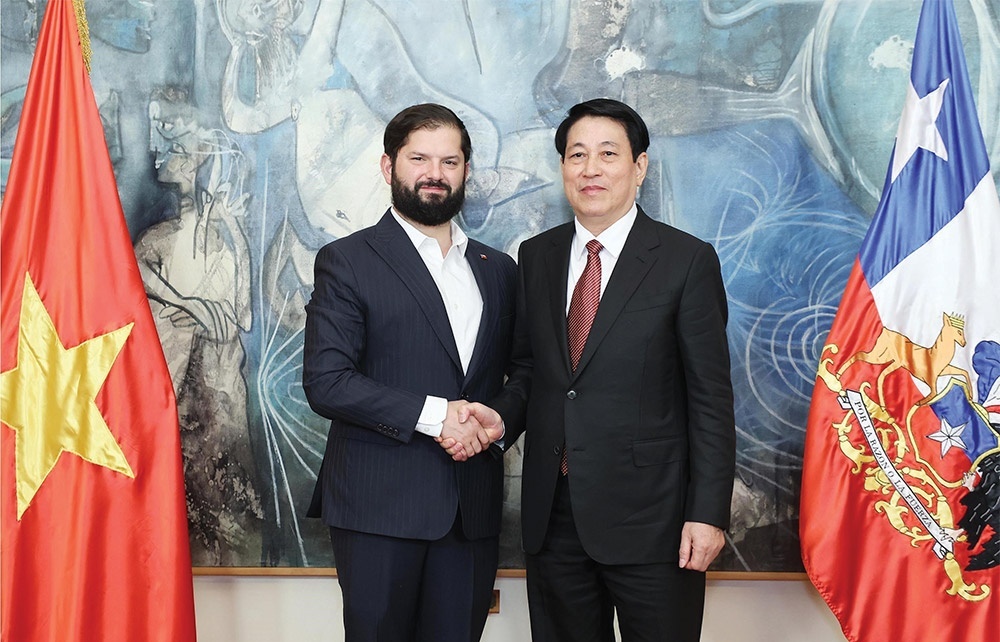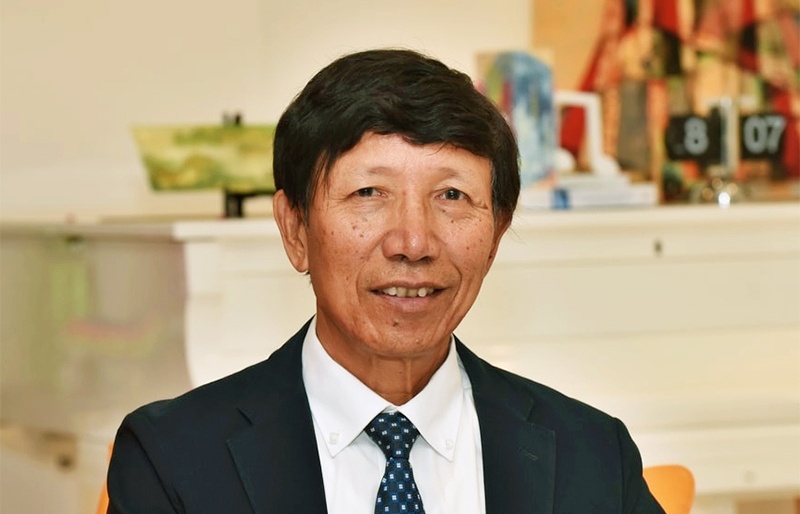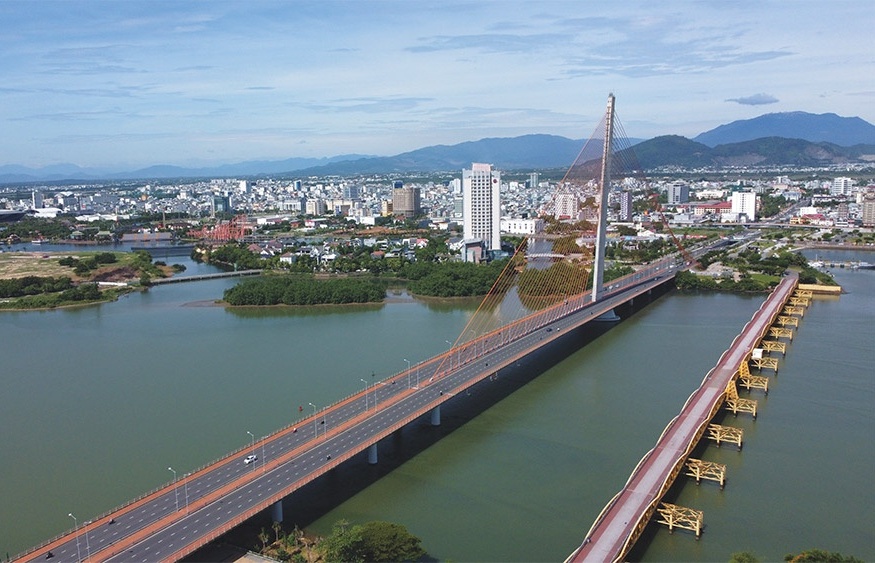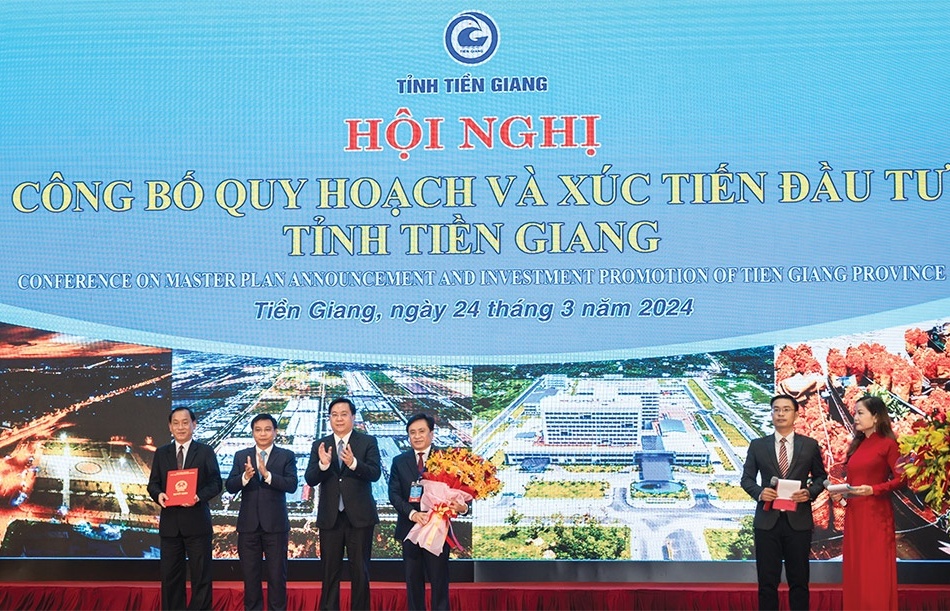Indirect investment: sign of the times
The media often talks about Foreign Direct Investment (FDI) in Vietnam and depending on which source and statistic you view, this figure ranged from between $5 billion to $5.5 billion in 2004.
 Rising indirect investment is an advertisement for further foreign business interest in Vietnam |
On the other hand, another form of investment which carries great importance and is often overlooked is the Foreign Indirect Investment (FII). FII operates through the establishment of foreign investment funds, with the most obvious example being VinaCapital, Dragon Capital, IndoChinaCapital, and IDG Ventures Vietnam. Between 1994 and the introduction of the Domestic Investment Law in 2004, foreign indirect investment in some 100 local companies topped the $400-million mark.
Operation of foreign investment funds could be divided into two periods, that being before and after the Asian financial crisis. The first foreign investment funds made their appearance in 1991, including large scale investments with Vietnam Enterprise Investment Ltd ($60 million), Beta Vietnam Fund ($70 million), The Vietnam Fund Ltd. ($60 million), Vietnam Frontier Fund ($60 million), etc. Some of them withdrew around $200 million in total after the Asian financial crisis hit. Starting in 2001, the operation of foreign investment funds recovered from the often termed, “second wave”. At present, there are six investment funds capitalised at approximately $480 million. They started off as small but have been increasing in size and gained some tremendous experience and have successfully returned profits to their investors.
These funds provide great investment vehicles to attract foreign institutional and qualified investors into Vietnam as the investment managers of these funds are often English-speaking foreigners and Viet Kieu (overseas Vietnamese). In addition, the presence of these funds increases investment standards in Vietnam, improves financial transparency, and increases opportunities for exit strategies. After the financial crisis, the flow of foreign indirect investment began to rise again, but it represents only a small proportion of the total foreign investment: 1.2 per cent in 2002; 2.3 per cent in 2003 and 3.7 per cent in 2004, while this proportion in such neighboring countries as Thailand, Malaysia and China varies from 30 per cent to 40 per cent.
Foreign investment funds often invest in two categories: listed securities or private equity. Listed securities are traded via the main stock markets (Ho Chi Minh City and Hanoi) or the active over-the-counter (OTC) market. Private, non-listed companies and real estate projects also present great investment opportunities and can be invested through the form of private equity. Only the foreign investment funds with large capital and global managerial skills can invest in attractive local companies as they do not only provide capital, but also operational and strategic assistance to the senior management team. In Vietnam, private equity investment through foreign investment funds is much needed as most companies require global management skills, sales, marketing, and differentiations.
Although the stake in local companies held by foreign investors increased from 30 per cent to 49 per cent recently, it still fell short of their expectations. Of the 35 listed companies in the stock market, only 15 had shares held by foreign investors. In other companies, they held only small proportions because of poor performance and small scales. The total market value of the listed companies was only around $350 million. It is quite small in comparison with regional stock markets: 1,300 listed companies worth $480 billion in China; 250 listed companies and $80 billion in the Philippines; 430 companies and $110 billion in Thailand. In addition, the expected payback from small-scale companies through the stock market is not desirable.
Fund and Fees
The idea of fund investment is still new in Vietnam and many developing countries. Fund investment is suitable for an investor who wants to be able to choose to invest in a particular classification of assets (eg. London shares, Vietnam real estate or technology companies), without having to study the characteristics of the individual assets. Financial advisors often direct some or all of their clients’ assets towards fund investments.
Fund investment spans the gamut of riskiness (and reward) from ultra-safe, low-yielding bond funds at one extreme, to highly-leveraged derivative hedge funds at the other. Another type of high risk investment fund is venture capital, which became popular in the late 90s due to the rise and fall of dot-com companies. Investors in venture capital funds are also often invited to participate, or funded by one company (IDG is the sole investor in IDG Ventures Vietnam, for instance).
Fund managers of investment funds normally charge investors in the fund a management fee, which is calculated as a fixed percentage of assets under management, and an incentive fee, which is calculated as a percentage of the fund’s returns. Other “administrative” fees may also be charged. A fund might charge a 2 per cent management fee and a 0.4 per cent administrative fee in addition to a 20 per cent incentive fee. If a fund manages $100 million and earns $18 million in income and capital gains over a year, the combined fee for the year would be $6 million.
For ease of exposition, this example assumes fees are paid annually. In practice, they are charged monthly or quarterly. The incentive fee may be subject to a hurdle rate or high-water mark provision. With the former, the performance fee is paid on returns only in excess of some hurdle rate. If there were a 5 per cent hurdle rate in the above example, the total fee would be reduced to $5 million. A hurdle rate may also be set equal to some variable index, such as the Libor. About one in five investment funds employ a hurdle rate of some sort.
With a high water mark, a fund must recover any losses - return to the last high-water mark - before incentive fees can be charged. For example, if a fund loses $10 million one year but earns $12 million the next year, any performance fee for the second year will only be based on the $2 million gain in excess of the prior year’s loss. Since investors may join the fund at different times, high water marks must be tracked individually for each investor. About four out of five investment funds employ a high-water mark provision.
Exit Strategies
An exit strategy is one of the key concerns for most investors in investment funds. Also known as a liquidity event, an exit strategy is the fund’s intended method for liquidating its holdings while achieving the maximum possible return. These strategies depend on the exit climates including market conditions and industry trends. Exit strategies can include:
1. Selling or distributing the portfolio company’s shares after an initial public offering (IPO),
2. Sale of a portfolio company or investment asset to another entity or through the mergers and acquisitions (M&A) process,
3. Recapitalisation or repurchase of shares from investors by the owner.
In simple terms, exit strategies are methods of how investors can get their money back, hopefully with healthy profit. In Vietnam, exit strategies are often in the form of an M&A since the stock markets are not yet mature. In order for investors to reap greater rewards and return multiples, the capital market will need to grow drastically or investment portfolio companies will need to be able to provide an IPO in international markets such as Singapore, Hong Kong, Tokyo, or even major markets such as NYSE and NASDAQ.
Currently, no Vietnamese company has ever IPO’ed in an international market but it is inevitable that this will happen in the next few years with the emergence of powerful Vietnamese companies preparing for international listings, including Vinamilk, VMS/Mobifone, Vietcombank, Bao Viet Securities and Kinh Do.
The Early Bird Gets the Worm
Through the Foreign Indirect Investment process (FII), investment funds currently in existence in Vietnam play a vital role in developing enterprises and capital markets. Funds such as VinaCapital and Mekong Capital, are leading the pack by placing heavy emphasis on working closely with their portfolio companies and entrepreneurs on global competitiveness, executive development, sales and marketing training, and efficiencies through technology implementation. In addition, most investment funds have influential relationships with their existing international investors and senior executives and can often help portfolio companies expand regionally and globally.
To generate excitable return on investments, the investment funds appear to understand the value of patience. With Vietnam entering WTO within the next few years, competition will be fierce for all parties and more multinationals will enter the Vietnam market. Those companies and investment funds with a competitive edge and market share all realise that the value of their investments will naturally increase due to incoming demand. That will be their moment in the sun as they bet on the growth of Vietnam and its ability to profit handsomely for their investors.
___________
(*) Managing Director of VinaCapital
What the stars mean:
★ Poor ★ ★ Promising ★★★ Good ★★★★ Very good ★★★★★ Exceptional
 Tag:
Tag:
Related Contents
Latest News
More News
- The promotion of ESG via banking (November 21, 2024 | 09:32)
- Standard Chartered committed to Vietnam’s financial success (November 21, 2024 | 09:24)
- Full ESG adoption the priority for Agribank (November 21, 2024 | 09:07)
- Banks entice youth with tech advances (November 21, 2024 | 08:00)
- Banks shaping the future as business advisors (November 20, 2024 | 21:00)
- ESG represents a shift towards sustainability for banks (November 20, 2024 | 13:00)
- GGGI supports Vietcombank’s debut of $80 million green bonds (November 20, 2024 | 11:20)
- SHB and the ESG journey: creating social value in every step (November 19, 2024 | 15:00)
- Banking sector contributes to ESG, green growth, and sustainable development (November 19, 2024 | 14:42)
- ESG implementation in banking: from awareness to action (November 19, 2024 | 12:08)























 Mobile Version
Mobile Version